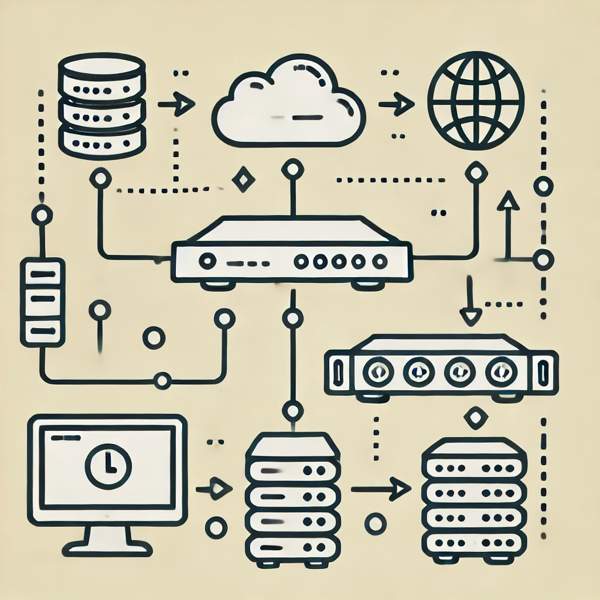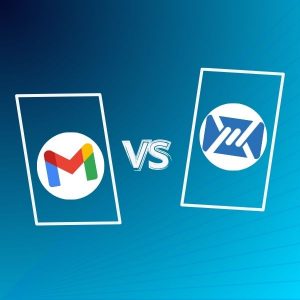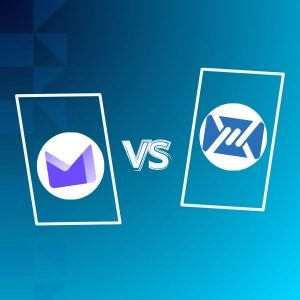You may have heard of vendor lock-in online or on the news recently. But do you know what it is, and how to protect yourself from it?
In summary, vendor lock-in refers to a situation where a customer becomes dependent on a single vendor for products or services, making it challenging to switch to a different provider without substantial costs or inconvenience.
In this guide, we’ll cover everything you need to know, including:
- different types of vendor lock-in;
- what data reversibility is;
- tips to avoid vendor lock-in.
So without further ado, let’s explore!
What is Vendor Lock-in?
First things first, let’s define what vendor lock-in actually is.
Vendor lock-in, often termed proprietary lock-in, is a situation where a customer becomes dependent on a vendor’s products or services.
This makes it challenging to switch to another provider without facing significant switching costs or inconvenience. This is actually a lot more common than we think. How many times have you thought “I’d love to switch away from Gmail“, only to be discouraged by how much effort that would represent?
In the tech industry, where businesses rely heavily on specific software and hardware, this is even more relevant.
Let’s look at a few examples to make this more concrete.
Example #1: Email vendor lock-in
Email vendor lock-in refers to email providers using vendor lock-in techniques to make sure you can’t switch to another service.
For instance, an email provider might prevent you from downloading your emails locally.
Without the ability to get your data back, it will be very hard to switch providers. Similarly, they could lock you in by preventing you from setting a forwarding address, or by making it cumbersome. All these techniques contribute to a vendor lock-in situation.
Example #2: Hardware lock-in
However, vendor lock-in can also happen with hardware.
Hardware lock-in occurs when businesses become dependent on proprietary hardware solutions. This makes it challenging to switch vendors without significant costs or disruptions.
For example, companies often invest heavily in network infrastructure, such as routers, firewalls, etc. When choosing a specific vendor, the company may find it difficult to integrate products from other vendors.

Types of Vendor Lock-in
Vendor lock-in can take on many forms. Sometimes, it’s a core part of the business strategy of the company (did someone say Apple…?). Other times, it’s simply a fact of the industry. Let’s look at some types of vendor lock-in.
Financial lock-in
Financial costs are one of the main drivers of vendor lock-in. The cost of switching to a new vendor can be prohibitively high. This includes direct costs like purchasing new software or hardware and indirect costs like retraining employees and potential downtime during the transition.
Ecosystem lock-in
When a vendor offers a suite of interconnected services, moving away from one service can disrupt the entire ecosystem. For instance, someone who has been using an iPhone and Mac along with iCloud will find it difficult to switch to another provider without losing the seamless integration these services provide.

Technical lock-in
This occurs when proprietary technologies or standards are used, making it tough to switch without losing functionality or compatibility. For instance, a company using a proprietary database format may face substantial hurdles in migrating to a different database system.
Contractual lock-in
These are less frequent, but also a reality. Long-term contracts with significant termination fees can bind companies to a vendor. These contracts might include clauses that penalize the customer for early termination or switching to a competitor.
Why Should You Care about Vendor Lock-in?
So, why does vendor lock-in matter? Vendor lock-in can have several negative consequences, both for businesses and individuals.
Firstly, you expose yourself to increased costs. What happens if the vendor decides to up their prices by 50%? Without a realistic alternative, you have no choice but to pay more.
Secondly, vendor lock-in reduces your flexibility. Being tied to a single vendor limits the ability to adapt to changing needs or to take advantage of new technologies and innovations from other vendors. This is particularly true of businesses in fast-moving industries.
Finally, putting all your eggs in one basket puts you at risk of vendor failure.
By relying too heavily on one vendor, you increase the risk of disruption if the vendor experiences issues, such as financial problems, security breaches, or technical failures.
Vendor lock-in and data reversibility
Before sharing our tips on how to avoid vendor lock-in, let’s quickly talk about data reversibility.
Reversibility is a term describing the fact a user can get his/her data back from the service provider he/she is using.

For example, being able to export your emails and contacts is a form of data reversibility. But data reversibility amounts to much more. For example, Google collects data about its users and stores it on its servers. Such data includes personal details, shopping habits, blogs you frequently visit and so much more.
By storing this data, Google creates personalized ads and settings for you. Furthermore, all of this data is given to Google by you. Getting all your data back from Google involves a cumbersome process that deserves an article on its own.
That is why we would advise you to only use providers that do not base their business model on advertising, surveillance, and profiling.
In case you are coming from Gmail, you can read our dedicated blog post and migrate all of your data to Mailfence.
This is why checking for data reversibility before opting into a service is crucial:
- is it possible to export all of your data;
- how hard will it be?
- and for the new service you are migrating to, is it possible to import your data?
Your data should belong to you and you ought to have ownership of your data at all times. Luckily, this is exactly what we believe in here at Mailfence. That’s why we make it easy to import and export your data from your Mailfence account in a few, simple steps.
Europe: A Prime Example of Vendor Lock-In
In his great article on European critical dependencies, Jürgen Gaeremyn suggests that countries and municipalities across Europe should break free from their reliance on American cloud providers.
Here are some of the highlights from his analysis:
- 72% of Belgian municipalities run Microsoft mail servers;
- for Dutch municipalities, it’s 60%; Norway 64%, Sweden 57% and Finland… 77%!
On the other hand, countries such as Germany, “known for their strong hacker culture and cybersecurity awareness, land at merely 4% running Microsoft.”
As covered earlier in this blog post, such a heavy reliance on Microsoft poses serious concerns. Municipalities become easy victims to price hikes. Take, for example, a Finnish regional government that saw its Microsoft subscription price increase by 25%.
In addition, such a reliance on American providers puts Europeans at risk of unconsented data sharing, as outlined by the Cloud Act. The unstable geopolitical climate between the US and Europe is also a reason why many are feeling uneasy. Long-standing alliances are seemingly faltering.
A more striking example of the issues posed by vendor lock-in is seen when examining Belgium’s Fire Department IT structure. Jürgen Gaeremyn reports that, according to his findings, 100% of the Belgian police force uses Microsoft for their mail service, and 57% of the fire departments run Microsoft or Google.
This means that “if Microsoft were to become unavailable in Belgium, this would cause critical chaos and cost lives.”
We highly recommend you read the full article here, which also lays out his proposed solution for a self-sovereign Europe.
5 Tips to Avoid Vendor Lock-in
Now that we’ve covered what vendor lock-in is and why it matters, let’s look at some tips to avoid it.
Tip #1: Use open standards
Choose products and services that adhere to open standards and promote interoperability. This ensures that systems can work together and that switching vendors is more feasible.
Tip #2: Multi-vendor strategy
Avoid putting all your eggs in one basket. By using multiple vendors for different parts of your IT infrastructure, you reduce the dependency on any single vendor.

Tip #3: Data portability
Ensure that data can be easily exported and imported between systems. This might involve using standardized data formats or ensuring that vendors provide tools for data migration.
The exported data should be in standard formats such as :
- For email: Mbox (Email Mailbox File) or EML (E-mail message)
- For calendar events: ICS (Calendar File)
- For contacts: VCF (vCard File) or CSV (Comma Separated Values File)
A good practice is to make sure by emailing them and specifically asking if there is an option for you to get your data back. In case the vendor clearly states that you can have all your data back if you leave them then save this email. So when the time comes for you to leave they cannot deny that you can get your personal data back.
Tip #4: Regular vendor assessment
Periodically assess the performance and reliability of your vendors. This proactive approach allows you to identify potential issues before they become critical.
Tip #5: Use customer domains
Try to be independent of the domain name of your provider. This can be done by using your personal custom domain. This decreases friction when you want to change providers because you do not need to inform all your contacts that you have a new email address.
Final Thoughts on Vendor Lock-in
Up until now, only tech-savvy individuals knew about data reversibility and how to void vendor lock-in. But hopefully, you now have a better understanding of what vendor lock-in is, and how to avoid it.
Here at Mailfence, we believe that privacy is a right and not a feature. If a user wishes to leave a service and get his data back, it should be his right.
Unfortunately, not everyone shares our views about privacy and the way it should be treated. It is therefore up to you, the user to take the necessary steps and make sure you choose the right service providers. Start by choosing a secure and private email provider like Mailfence to make sure you can always export all your data, including emails, contacts, and even calendar events.
Vendor Lock-in: Frequently Asked Questions
Vendor lock-in occurs when a customer becomes dependent on a single vendor’s products or services, making it difficult to switch to another provider without significant costs or inconvenience.
Vendor lock-in reduces flexibility, increases costs when prices rise, and puts you at risk if the vendor faces technical or financial problems. It limits your ability to adapt to new technologies or competitors.
Data reversibility refers to the ability to export your data from a service provider and import it elsewhere. It ensures you remain the owner of your data and can switch providers without losing it.
To avoid vendor lock-in, use open standards, ensure data portability, adopt a multi-vendor strategy, regularly assess vendors, and use your own custom domain to reduce friction when switching providers.
![Avoid_vendor_lock-in[1] vendor lock in vector](https://blog.mailfence.com/wp-content/uploads/elementor/thumbs/Avoid_vendor_lock-in1-qp60rmi1q1wqd49okagmzohkzkaajhuae68g16xsi0.png)



